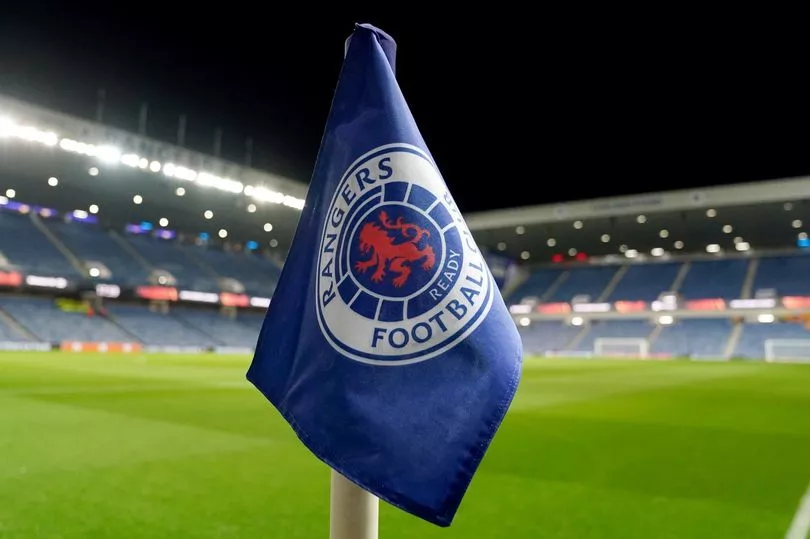
Cantwell explained why Clement has changed his position last week
“He’s said I’ve got a very good left foot all week and there you go, I go and score on it. Maybe he is a magic man after all.”
A smiling Todd Cantwell was happy to elaborate in the mixed zone last Thursday night when asked why new Rangers manager Philippe Clement has fielded him in a new position, playing from the right of midfield. After scoring from that flank on his left foot against Sparta Prague, it was a good time for the backstory.
“It’s a position I have not played in before,” Cantwell continued. “As a player, you do as the manager asks, the manager has asked me to play there and has seen something in me.”
“He’s said I’ve got a very good left foot all week – maybe he is a magic man after all…”
Since arriving in mid-October, Clement has quickly adopted a 4-2-3-1 shape, moving away from the narrow attacking configuration that Michael Beale favoured when rebuilding the squad over summer.
That’s presented opportunities for some, with the squad lacking depth in wide areas, and left Clement with solutions to find in other areas. Abdallah Sima has made the left-wing his own, at least until Rabbi Matondo returns to the fold, while Sam Lammers has started five of six games at No.10. Cantwell’s played most of his minutes from the right of midfield, while Scott Wright and Ross McCausland have also found game time ahead of James Tavernier.
But why, with Cantwell widely regarded as the best No.10 in the squad and more comfortable cutting in from his left, is Clement picking him in a position “he hasn’t played before”?
After all, presumably, there’s a reason no other coach has utilised Cantwell in that role before. After arriving from Norwich in January, he began his Ibrox career on that side of the pitch as part of a midfield three with Tavernier always providing width. Time spent in the outside channel was limited compared to the No.13’s influence in the centre.
It was the No.10 slot where Cantwell settled and thrived towards the end of last season, enjoying positional autonomy to impact the game and move where he saw fit. Speaking in April, he commented: “I said when I came here the manager is going to give me the freedom to play the way I want to and I think you’re starting to see that because I’m picking up the ball in lots of places.”
Looking at where Cantwell played his league minutes last season, that split between right central midfield and subsequent move to No.10 is clear.
Freedom for attackers was the hallmark of Beale’s attacking philosophy. Arguably, Cantwell’s omission from the No.10 spot proved to be a key component of the manager’s undoing. Beale would suggest just before his dismissal that “the biggest issue we’ve had is all the players who knew the way we played in the final third have moved on”, while rarely picking his form attacker from the tail end of the previous season, Cantwell, in the front three.
Clement’s tactical ideas differ from the man he replaced. The Belgian wants more obvious width in midfield and although when Cantwell’s played on the right he’s drifted inside regularly, there’s undoubtedly less ‘freedom’ to the role he fulfilled under Beale.
For example, look at the successful passes Cantwell received playing at No.10 under Beale in the final five matches of last season and notice the spread across the pitch…
…Compared to the passes he’s received playing from the right in the league under Clement to date…
He’s getting on the ball far more frequently on the right side of the pitch. It should be noted that Cantwell’s only played 170 minutes since regime change in the league so far, but the point in comparison is not volume.
Having established that during the early stages of Clement’s reign Cantwell’s role has changed, it’s important to ask why.
First, it’s relevant to consider what responsibilities the Englishman is being asked to carry out. Clement tasks Sima to become a second striker in possession, attack with width and isolate his pace and power whereas the requirement on the right differs. Cantwell’s job is to combine with his teammates, get on the ball facing play and move infield as Tavernier overlaps.
Here’s an example from the first half of a Viaplay Cup Semi-Final win over Hearts. Notice Cantwell’s narrow positioning with Tavernier providing width as five Rangers players combine to create an extra man on the right side.
As Danilo drops down a line, Tavernier’s width allows Cantwell to operate in central pockets and play in close proximity to teammates. Compare the numbers on the right (where the focus is on combination play) to the left.
In a game where there’s space, as we saw when Cantwell arrived to provide this assist late on against Hibs, the midfielder’s starting position arguably doesn’t matter all that much.
Because for all Cantwell’s strengths, he is not an explosive dribbler who thrives being isolated in wide zones. The creator is arguably more effective in tight spots than he is isolated in large spaces.
“I always base my touches off what defenders think I’m going to do and almost make them double-think,” he said in an interview with the Athletic during his time at Norwich.
“Sometimes you don’t need to beat a man to get past a man. If you manipulate your body one way and open up a space to play a ball through, the job is done. You haven’t necessarily gone past him and beaten him. I do look at it a bit like that.
“It’s not about strength. It’s not about pace. It’s about body manipulation. Dribbling is essentially moving while protecting the ball, keeping the ball close. I never really knock it and run as such, because I feel like you lose a bit of the control.”
Although, according to Cantwell, Clement has identified the strength of his left foot, placing Cantwell on the right cutting inside against set defences is not his optimal environment. Especially when opposition back fives need to be stretched and the centre becomes too busy. The angles available to work with are more restrictive for Cantwell driving away from the right-hand side, instead of opening up the pitch on his favoured side.
The space created in transition to cut in and score against Sparta often prove hard to come by domestically. After all, Cantwell is not a ‘two-way’ winger on the right who wants to hit the byline and provide cutbacks.
Despite his stunning goal against Dundee recently, Lammers is still to kick on at Ibrox. Even if Clement has spoken of his importance at set-pieces and hopes more confidence will deliver stronger performances. Is there a possibility that the manager is simply working with what he has at the current moment? Surveying the sum of his parts or, as he’s frequently repeated in pre-match press conferences, finding the right pieces for each game’s “puzzle”.
In utilising a squad built to play with multiple narrow attackers rather than two wingers, an element of compromise must arise somewhere. Perhaps it will just take time, or a transfer window, for a better solution than Cantwell to arrive on the right, enabling a move to the centre.
Many would argue Cantwell is this side’s best player, if not a close second.
Clement’s call to play him from the right is likely based on his options, circumstances and requirements elsewhere. There is of course method behind the call. Can he get the best out of his best creator in a new role or is it simply a short-term solution? Only time will tell.






